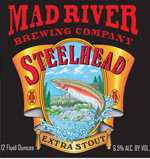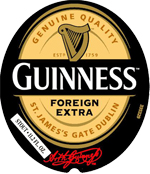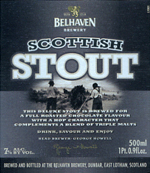The Evolution of Dry Stout
Thanks to brewing giant Guinness, stout is one of the most far-reaching and recognizable types of beer in the world. The brewery’s global march began more than 200 years ago, and the influence and pervasiveness of dry stout is still vigorous, especially among the new wave of brewers. Though dry stout is synonymous with Ireland, English brewers also played a historically significant role the development of the style. Dublin and London versions were essentially identical brews two centuries ago, sibling rivals at home and abroad. Dry stout is one of the more universally brewed craft beers, a staple in pubs and brewpubs from the northern hinterlands to the balmy tropics.
Stout originally meant any beer of fortitude, no matter the color. There were pale and brown stout, the latter the forerunner to porter. Proper porter, brewed entirely with brown malt, emerged in the early 18th century. Brewed to a multitude of strengths, stout porter, or a similar derivation, would have been the stronger version.
By the end of the 18th century, stout mostly came to describe strong versions of porter only and eventually a style itself rather than an adjective. A normal hierarchy of names, according to British beer writer Martyn Cornell, was common porter, best porter, stout or single stout, double or extra stout and imperial stout, but there were numerous other designations. The former pale stouts would evolve into barley wine, Burton ale, wee heavy, old ale and such.
London and Dublin became the pre-eminent porter and stout brewing cities by the mid-19th century. Dublin was dominated by Guinness, prosperous through far-sighted, ingenious promotion, innovation and above all, high-quality products.
Guinness may be famous now for its draft, extra and foreign extra stouts, but before getting into the stout business, it brewed ale and porter. Guinness was founded in 1759 by patriarch Arthur Guinness, who leased the dormant brewery at St. James’s Gate in Dublin. The newly constructed Grand Canal made for convenient shipping of incoming supplies and outgoing casks of ale and porter.
This ideal situation gave Arthur Guinness solid footing from the start and, coupled with his vision and shrewd business acumen, took Guinness swiftly to the top. He brewed the last Dublin ale in 1799 to concentrate on porter, not because of the popularity of the style in London, but because London porter was chipping away at Dublin’s local market. In 1801, the first Guinness West Indian Porter was brewed for export. It is now Foreign Extra Stout.
In Dublin, Guinness representatives in 1810 encouraged publicans to push a “stouter kind of porter,” one originally called Superior Porter, later Extra Superior Porter and eventually the now-famous Extra Stout.
In 1819, Daniel Wheeler’s revolutionary black “patent” malt was made available to brewers. Guinness was among the first to use this product, discovering it could make suitable porter and stout by using only pale malt and a small amount of patent malt. This was a departure from previous recipes composed of pale, amber and brown malts. It also lent a distinctive, signature roasted flavor. Using this new formula, Arthur Guinness II finalized the Extra Superior Porter recipe in 1821, cited above as the precursor to Extra Stout.
This is where the Dublin and London stouts diverged over the next few decades, according to some observers. Dublin stout, using the Guinness template, came to mean a marginally drier version, made only with pale and patent malt. The attenuation was largely due to the exclusion of less fermentable amber and brown malts. London stout, truer to precursors, used pale and brown malts, but often a bit of the newly minted patent malt and perhaps amber and crystal malt. Some brewers eschewed the patent malt altogether, relying on the traditional brown malt. Irish brewers often “gyled” theirs with a dose of lively, fermenting beer for conditioning. These ubiquitous, high-quality Irish and English porters and stouts became dominant beers of the 19th century.
Porter and stout could be brewed from a single recipe, using an equivalent amount of malt, but varying the volume of brewing liquor to produce the different strength beers or modifying hop levels. Records also show that some were tailoring recipes for individual brews using pale, amber, brown and/or patent malts. Generally speaking, stouts (and porter) from all destinations were rather similar, brewed with largely the same ingredients, crafted to the preferences of the individual breweries. It was a situation of wealth and relative diversity that any beer lover would crave.
London brewers were by now exporting their product, mostly porter, worldwide, and Guinness was doing the same with stout. By the mid-1800s, Guinness products could be found from the United States to New Zealand, and were called single stout (porter), double stout (extra stout) and Foreign Extra Stout.
Between 1830 and 1880, beer was taxed by ingredients, namely malt and hops, rendering unmalted grain illegal. The Beer Tax of 1830 gave way to the Free Mash Tun Act in 1880, which taxed the original wort gravity, allowing inclusion of adjunct grains and sugars. Many brewers switched from roasted malt to cheaper roasted barley, a move likely noticed only by the most discerning palates and traditionalists. Guinness made the alteration around 1929 or 1930.
By the early 20th century, porter had essentially run its course in England and was replaced by stout as the dark beer of choice. Along the way, stout had also lost its meaning as a strong beer, but simply a black beer chiefly brewed in England and Ireland. The dry stouts contrasted greatly with sweet milk stouts favored at the turn of century. Sweet stouts became England’s preferred roasty beer, leaving Ireland chief domain of the dry version.
Guinness, always keen on innovation, continued to evolve. It replaced some pale malt with flaked barley some time in the 1950s, and in 1959 introduced the “draught” dispense system, using a mixture of carbon dioxide and nitrogen. The draught dispense was designed to duplicate the “high and low cask” method of blending lively young beer with flat mature beer from separate casks. This serving method brings the impressive surge that settles into a tight, tenacious, long-lasting head. It has been copied by many brewers seeking to emulate the soft flavor, mouthfeel and presentation in stouts, porters and ales. The can widget, a more recent invention, offers the same effect.
Though Irish stout has become synonymous with dry stout, most brewed today emulate the historical versions from Dublin and London, and not the modern Irish type.
Most plain dry stouts are now are brewed to modest gravity, with a diverse malt bill, and fuller character than Irish dry stouts.
That radical Export Stout brewed by Guinness in 1821 and its London counterpart help cast the die for the most active stout-brewing market in the world, North America. American brewers especially gravitated to stout early on, and it continues to be standard fare.
American-style dry stouts are stylized with the typical affection for American hops, including heavy aromatic additions, and fermented with neutral American ale yeast. They usually have complex grain bills liberally augmented with crystal and chocolate malts, with up to 10 percent black malt or roasted barley/malt. Brown or amber malts are used on occasion. Gravities range from 5.5% to 7.5%.
Those designated “English” stouts are similar to the Americanized version, especially with regard to malt/grain, but use English ingredients where appropriate or feasible. There is a firm base of bittering hops and more subdued aromatic additions. English ale yeast gives them an authentic footprint. They are a nod to tradition and are generally made pretty well. Strength would be roughly the same as American stout.
Those made to the modern Irish template would be of lower gravity (4-5%), contain adjunct grain, minimal character malts, a copious addition of roasted barley or malt, well-dosed with bittering hops and fermented with an attenuative Irish yeast.
Trends come and go in brewing, but our hankering for plain old stout will never wane. Raise a pint to all of the brewers who keep these styles alive.

Mad River Brewing Co. Steelhead Extra Stout
ABV: 6.5Tasting Notes: Brewed in Blue Lake, CA, Steelhead Extra Stout is as excellent an example of dry stout as can be found in America. The pour is opaque; the head, creamy and clingy. The nose offers loads of malty caramel with wisps of cocoa and vanilla. The palate is quite dry; the mouthfeel light. Decidedly roasty in the flavor, with bittersweet chocolate and coffee. Hops serve only as a backdrop to the malt, but bring an earthy quality that meshes seamlessly with the peaty finish. Mad River was part of California’s first wave of microbreweries of the 1980s and early ’90s who helped put America on the brewing map, and it is celebrating 25 years. Steelhead’s 6.5% ABV is easily lost in its easy drinkability.

North Coast Brewing Co. Old No. 38 Stout
ABV: 5.4Tasting Notes: North Coast Brewing Co. of Fort Bragg, CA, is yet another one of the survivors of the 1980s American microbrewing renaissance. Mostly famous for its Old Rasputin Russian Imperial Stout, North Coast’s core lower-gravity beers are just as stellar. Old No. 38 Stout pours onyx black, and sports a rambunctious, tenacious crown of foam. Roasted grains dominate the nose, with a firm hoppy background and hints of licorice, chocolate and burnt sugar. Medium-light in body. The flavor has a sturdy bitterness of both hops and dark roast coffee. Chocolaty malt in the lingering finish is cut by a light sweetness. At only 5.4%, Old No. 38 Stout is appetizing, mellow and easygoing. Simply, one of the best in America.

Guinness Foreign Extra Stout
ABV: 7.5Tasting Notes: Finally back to America in 2010 after a 90-year absence, Guinness’ original export stout is robust at 7.5%. Deep, inky black, with a head that eagerly forms 2 inches and laces my snifter. Besides the massive roasted notes in the nose, there is raisin, toffee and dark chocolate. Medium in body and creamy, but relatively light for a beer of such fortitude, Foreign Extra Stout is full of flavor, with molasses, toasted nuts and dark cocoa. The finish is gritty, earthy and woody, with some herbal hop and roasty bitterness as well as a touch of tartness. It falls pleasantly short of the alcoholic punch or overwhelming hoppiness that seems to accompany most strong stouts.

Belhaven Brewery Scottish Stout
ABV: 7Tasting Notes: Located in Dunbar, Belhaven Brewery is one of the few remaining traditional breweries in Scotland. It has been brewing since 1719. Famous for Scottish ales, the brewery also make this sturdy, malty and unique dry stout. Expectedly black with reddish tints, it has an aroma that is malty, with chocolate, licorice and vanilla. Medium-full bodied, it has a velvety mouthfeel. The flavor is full of malt, burnt sugar, sweetened coffee and dark cocoa with hints of anise. The finish has some residual sweetness, but is mostly sharp, roasted, peaty grain. Highly recommended if you are looking for something a bit different, but with all of the benchmarks of strong, dry export stout at 7%.
K. Florian Klemp
K. Florian Klemp is an award-winning homebrewer and general hobbyist.

Great article. As a home brewer, the history of beer intrigues me. Great rest research. Thank you for the onsite into one of my favorites
I’ve loved stouts and porters for decades, and this “bio” has taught me more than I thought I knew. That’s a good thing. Bartender! Another please…